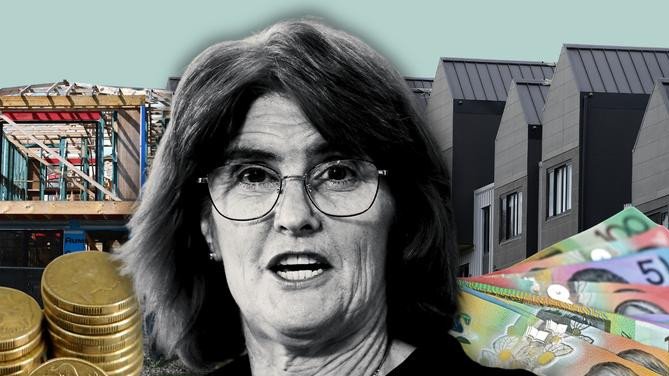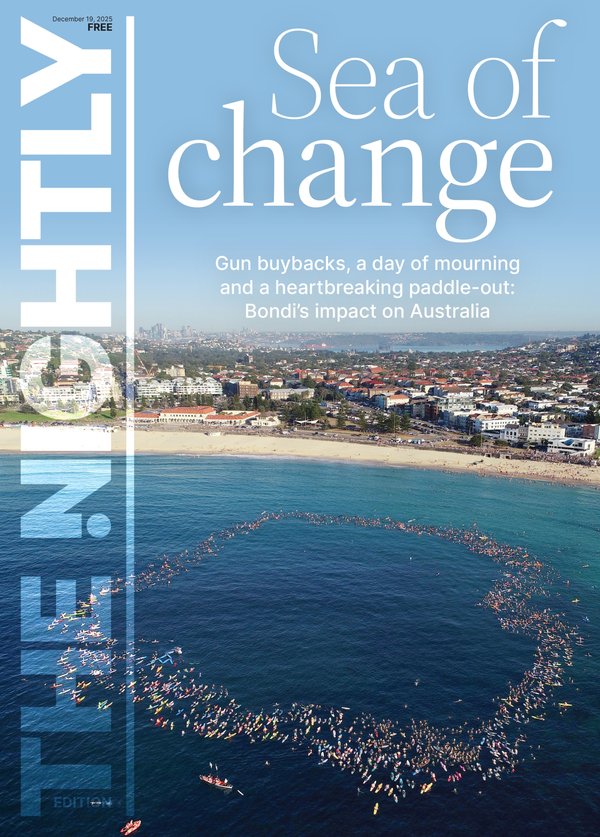Unemployment soars to four-year high after RBA chief Michele Bullock hints at another rate cut

Pressure is mounting for a Melbourne Cup day rate cut after unemployment unexpectedly rose to a four-year high, with new figures released just hours after Reserve Bank of Australia governor Michele Bullock hinted home borrowers were likely to get more relief in 2026.
New data released on Thursday showed unemployment in September edged up to 4.5 per cent, adding to the case for relief this year with the jobless level worse than RBA predictions and demonstrating the labour market is no longer so tight.
Economists and financial markets had been expecting the RBA to keep rates on hold at 3.6 per cent at its next meeting on November 4, coinciding with Melbourne Cup day.
Sign up to The Nightly's newsletters.
Get the first look at the digital newspaper, curated daily stories and breaking headlines delivered to your inbox.
By continuing you agree to our Terms and Privacy Policy.But those expectations were challenged, with new Australian Bureau of Statistics data showing the jobless rate in September climbing to 4.5 per cent, up from 4.3 per cent in August, marking the highest jobless level since November 2021 during the end of COVID lockdowns in Sydney and Melbourne.
This was worse than financial market expectations of a 4.3 per cent jobless level.
With 33,900 people joining the ranks of the unemployed last month, the jobless level is also worse than RBA forecasts of a 4.3 per cent unemployment rate by the end of 2025.
Victoria had Australia’s highest jobless rate of 4.7 per cent, which is particularly concerning given it has Australia’s second biggest economy and population as the home of Melbourne.
In a revealing chat in Washington, DC, hours before that data was released, Ms Bullock hinted that another interest rate cut was possible in 2026 given the cash rate was still above the neutral level where it is neither aiming to stimulate nor slow the economy.
“We don’t think policy is restrictive, but we don’t think it’s accommodative. We think it is marginally tight,” she told a Nomura fireside chat early on Thursday morning Australian time.
“It’s probably a little on the tight side but not much”.
Ms Bullock, however, hinted short-term inflationary pressures were likely to stop the Reserve Bank from cutting interest rates in 2025.
“A little bit of recent data suggests the economy is starting to turn, particularly consumption, as real wages and wealth has been rising,” she said.
“The most recent data, particularly housing dwelling costs and market services inflation, looked a little stronger than expected.
“Those sorts of things are at the back of our mind, with these factors giving us time to think whether there’ll be more easing or not.”
The RBA chief was reluctant to give a guarantee of rate cuts, given her predecessor Philip Lowe in 2021 promised RBA interest rates, then at a record low of 0.1 per cent, would stay on hold until 2024 “at the earliest” only for rates to soar in 2022 and 2023.
“Given the experience we had with the previous governor telling people what we think will happen with interest rates in six months’ time, I am still very gun shy of that,” Ms Bullock said.
AMP economist My Bui said the higher jobless rate for September made a November rate cut more likely.
“We’re pencilling in two more rate cuts, in November as well as February,” she told The Nightly.
“Previously, we think that November rate cut is a little bit of a line-ball call, probably a 50:50.
“I think today’s unemployment rate number, it probably makes that November rate cut a little bit more likely.”
The Australian Council of Trade Unions also called on the RBA to cut rates next month.
“It needs to cut rates to make sure the economy does not slow further because it held interest rates too high for too long,” president Michele O’Neil said.
“Today’s data shows that holding rates at restrictive levels has meant higher unemployment and more pain for working people.”
Westpac chief economist Luci Ellis, a former RBA assistant governor, said the higher jobless rate than expected was a sign the supply of labour was no longer so tight.
“I don’t want to make too much of one month’s figures but what we saw today is consistent with our medium-term view that there is more labour supply and thus less domestic inflationary pressure than what the RBA currently believes,” she told The Nightly.
Of the big four commercial banks, Westpac is the only one expecting a November rate cut, with Ms Ellis suggesting monetary policy was still “a little restrictive” with inflation still in the target range.
Inflation in the year to August grew by 3 per cent, which was at the top of the RBA’s 2 to 3 per cent target.
While this was volatile monthly data, another set of high consumer prices during the September quarter could put a stop to rate cuts in 2025.
That more comprehensive quarterly data is due out on October 29, ahead of the RBA’s November meeting.
“A chunky inflation number could still see the RBA remain on hold, but the resilient labour market data has not happened and in fact the labour market numbers were softer than a lot of people were expecting,” Ms Ellis said.
The Commonwealth Bank and ANZ are expecting the next rate cut to occur in February next year, while NAB sees that relief being delayed until May.
However, NAB conceded the higher unemployment rate made a November rate cut more likely.
“Today’s outcome clearly makes a November cut a higher probably than would have been the case had today’s number been near our and consensus expectations,” its economists said in a note.
The jobs growth level of 1.3 per cent is also weaker than Australia’s population growth pace of 1.6 per cent.
Christopher Kent, the RBA’s assistant governor in charge of financial markets, said trying to figure out a neutral cash rate would be unlikely to provide clues on a possible rate cut in 2025.
“While neutral rate estimates are a useful cross-check, they are not a suitable guide to the near-term path of monetary policy,” he said.
Dr Kent, however, said RBA rate cuts in February, May and August were likely to be already stimulating the economy, suggesting another rate cut won’t be needed soon.
“Indeed, several indicators of financial conditions – including mortgage payments and housing credit growth – show early signs of responding to the easing in financial conditions this year,” he said.

